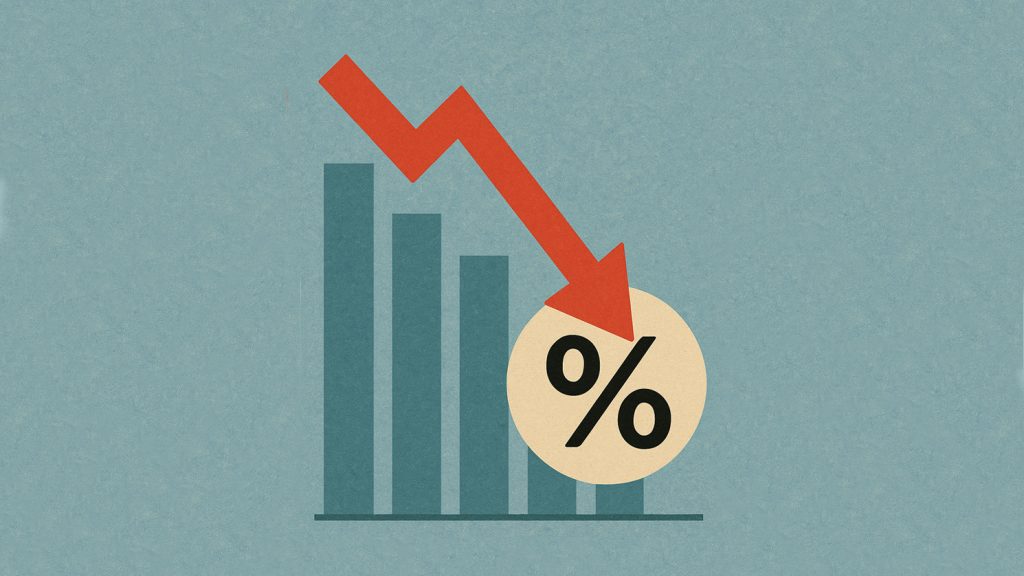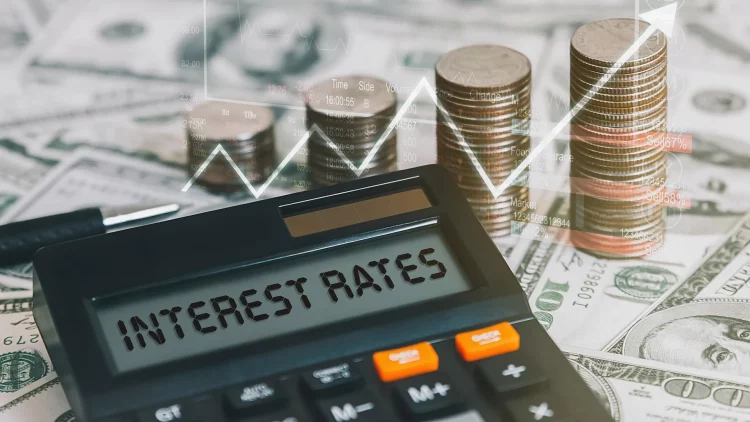Introduction: The Interest Rate Reality Check
As central banks around the world continue to grapple with inflationary pressures, higher interest rates have emerged as both a tool and a trial for the global economy. In the United States, the Federal Reserve’s hawkish stance has resulted in the most aggressive rate hike cycle since the early 1980s. While inflation has shown signs of moderation, interest rates remain elevated—casting a long shadow over corporate earnings. Investors, analysts, and CEOs alike are questioning whether this era of “higher for longer” will undermine the profitability of publicly listed companies, or whether corporate America can withstand the financial strain.
In this article, we will examine the multifaceted impact of higher interest rates on corporate earnings, break down sector-specific risks and resilience, and integrate expert insights on what lies ahead. From tightening credit conditions and rising debt-servicing costs to margin compression and changing consumer behaviors, we will uncover the nuanced reality behind a critical economic question: Will higher interest rates crush corporate earnings this year?
Understanding the Mechanics: How Interest Rates Impact Earnings
Interest rates affect corporate earnings through multiple transmission channels. At a basic level, rising interest rates increase the cost of borrowing. Companies that rely on debt to finance expansion, operations, or M&A activities face a direct hit to their income statements due to elevated interest expenses. This erosion of net profit margins is particularly acute for firms with weak balance sheets or those operating in capital-intensive industries.
Beyond direct financing costs, higher interest rates also tighten credit conditions more broadly. Banks and lenders become more selective, leading to a contraction in credit availability. Small and mid-sized enterprises (SMEs), which lack the balance sheet strength of their larger counterparts, are often the first to feel the pinch. In turn, reduced business investment and curtailed hiring plans can cascade into slower economic activity and weaker demand for goods and services—thus indirectly pressuring corporate top lines.
Consumer behavior also shifts significantly. Higher rates translate into more expensive mortgages, car loans, and credit card balances. As household debt servicing burdens rise, discretionary spending tends to fall. This impacts sectors such as retail, travel, and entertainment more severely than others. Additionally, higher yields on fixed-income securities attract investor capital away from equities, compressing price-to-earnings (P/E) multiples and exerting valuation pressures.
Finally, exchange rates come into play. Tighter monetary policy tends to strengthen a nation’s currency, which can hurt export-oriented businesses as their goods become more expensive abroad. For multinational corporations, currency headwinds can be a silent earnings killer.
Sectoral Breakdown: Winners, Losers, and Survivors
Not all sectors respond equally to interest rate hikes. Some are structurally more vulnerable, while others may benefit or at least remain resilient.
Financials: A Mixed Bag
At first glance, higher interest rates should benefit banks and insurance companies, particularly those with significant interest-sensitive assets. Net interest margins (NIMs) typically expand as loan yields rise faster than deposit costs. However, the story is more nuanced. Loan demand tends to weaken in a high-rate environment, and credit quality can deteriorate as more borrowers face repayment challenges.
Regional banks, which rely heavily on commercial real estate lending, are particularly exposed. With office vacancies remaining high in a post-pandemic world and refinancing becoming more expensive, the potential for loan losses has increased. Meanwhile, insurers benefit from higher investment yields on their bond portfolios but may face underwriting challenges if economic growth slows sharply.
Technology: Growth Under Pressure
Technology companies—especially those in the high-growth, low-profit phase—are typically rate-sensitive due to their reliance on future cash flows. Higher discount rates reduce the present value of these cash flows, leading to sharp valuation declines. Moreover, many tech firms have leveraged balance sheets after years of cheap capital, making refinancing a costly affair.
That said, not all tech is equally exposed. Cash-rich behemoths like Apple, Microsoft, and Alphabet are better positioned to weather the storm. Their diversified revenue streams, strong pricing power, and global footprints offer a cushion against macroeconomic headwinds. Meanwhile, enterprise software and cybersecurity firms with sticky revenue models continue to demonstrate resilience.
Consumer Discretionary: Feeling the Pinch
Rising interest rates have a pronounced impact on the consumer discretionary sector. From homebuilders and auto manufacturers to luxury retailers and leisure services, companies in this space are heavily reliant on consumer spending power. With mortgage rates hovering at multi-decade highs and credit card APRs exceeding 20%, households are pulling back on big-ticket purchases.
Home improvement chains, furniture retailers, and automotive suppliers are seeing demand slow, while e-commerce platforms struggle with rising logistics costs and margin compression. Even streaming platforms and subscription-based businesses are not immune, as households scrutinize non-essential expenses.
Consumer Staples: A Relative Safe Haven
In contrast to their discretionary counterparts, consumer staples companies—those selling everyday essentials like food, beverages, and household products—tend to perform relatively well in high-rate environments. Demand for toothpaste, cleaning supplies, and packaged goods remains inelastic, offering some protection against economic slowdowns.
However, margin pressures still exist. Input cost inflation, coupled with higher borrowing expenses and wage growth, can erode profitability. The ability to pass these costs onto consumers is a critical determinant of earnings resilience. Companies like Procter & Gamble and Coca-Cola, with strong brand equity and pricing power, are faring better than generic or budget brands.
Energy and Industrials: Complex Dynamics
The energy sector often benefits from inflationary conditions and geopolitical uncertainty, which can drive up oil and gas prices. Yet, the relationship with interest rates is more complex. Higher rates can dampen global growth and, by extension, energy demand. Capital-intensive exploration and production activities also become more expensive, squeezing free cash flow.
Industrial companies face similar headwinds. Higher borrowing costs increase the expense of maintaining large inventories, funding equipment purchases, or upgrading manufacturing facilities. That said, companies exposed to government infrastructure spending may receive a lifeline as fiscal policy partially offsets monetary tightening.

Real Estate: Under Pressure
Few sectors are as directly exposed to interest rate changes as real estate. Rising mortgage rates have cooled housing demand, slowed home price appreciation, and increased buyer hesitancy. On the commercial side, higher cap rates have reduced asset valuations, while remote work continues to suppress office space demand.
Real Estate Investment Trusts (REITs), particularly those in retail, office, and hospitality segments, have struggled. However, specialized REITs—such as those focused on data centers, cell towers, or logistics hubs—have demonstrated greater earnings durability, driven by secular trends in digital infrastructure and e-commerce.
Expert Opinions: Navigating Through the Fog
Opinions among economists and financial analysts are divided. On one side are the bears, who believe that sustained high interest rates will act as a “slow poison” to corporate earnings. They cite the historical lag between monetary tightening and its full impact on profitability—often 12 to 18 months. With the current tightening cycle entering its third year, many expect the full brunt to be felt in the latter half of 2025.
Christopher Wood, Global Head of Equity Strategy at Jefferies, recently warned that “Corporate profit margins are peaking and set to decline as refinancing costs surge and consumer demand softens.” He points to rising default rates and deteriorating business confidence as leading indicators.
On the other side are optimists who argue that many corporations have proactively managed their balance sheets, locking in low rates during the 2020-2021 period. According to Goldman Sachs research, nearly 40% of S&P 500 companies extended their average debt maturities beyond 7 years, buying themselves a cushion against immediate interest expense shocks.
Moreover, earnings guidance for the upcoming quarters remains surprisingly resilient. JPMorgan strategist Dubravko Lakos-Bujas noted, “We’re seeing strength in service-oriented businesses, stable credit spreads, and better-than-expected corporate pricing power. The doom loop from higher rates to lower earnings has not fully materialized.”
Resilience or Reversal: What the Data Suggests
A look at recent earnings seasons suggests a mixed picture. In Q1 2025, aggregate S&P 500 earnings grew by 3.4% year-over-year, defying bearish expectations. However, this topline figure masks considerable divergence. The energy and healthcare sectors contributed disproportionately to growth, while consumer discretionary and real estate earnings contracted sharply.
Margins are showing signs of strain. According to FactSet, the net profit margin for S&P 500 companies declined to 10.5% in Q1 2025 from 12.1% a year earlier—the steepest drop in over a decade. Moreover, forward earnings estimates have started to flatten, indicating that analysts are increasingly cautious about the rest of the year.
Capital expenditure growth has slowed, especially among smaller firms. Business investment, a leading indicator of confidence, is down 7% from the prior year. Meanwhile, corporate buybacks—often a sign of earnings strength—have also decelerated, suggesting that companies are hoarding cash in anticipation of tougher conditions.
Investor Strategies: Navigating a High-Rate Landscape
Given the uncertain impact of elevated interest rates, investors are adapting their strategies. Many are rotating into value stocks with strong free cash flows, robust dividend yields, and low leverage. Defensive sectors like utilities, healthcare, and consumer staples are seeing renewed interest.
Bond-proxy equities—such as REITs and infrastructure stocks—are being re-evaluated based on their sensitivity to rate movements. High-quality fixed income is regaining favor, particularly Treasuries and investment-grade corporates, offering a viable alternative to equity exposure.
Some portfolio managers are taking a barbell approach: combining growth names with secular tailwinds (e.g., AI, renewable energy) with income-generating value stocks. Hedging strategies using options and volatility-based instruments are also gaining traction.
Conclusion: The Jury Is Still Out
As we move further into 2025, the impact of higher interest rates on corporate earnings is neither uniformly destructive nor benign. The answer lies in the details: sectoral composition, capital structure, pricing power, consumer trends, and macroeconomic backdrop all interact in complex ways.
Some sectors and companies will emerge bruised but intact; others may find the new normal too burdensome to navigate. Much will depend on central bank decisions in the coming months—whether they signal an imminent pivot or maintain the status quo. For now, corporate earnings are caught in the crosscurrents of policy, performance, and perception.
The ultimate verdict? Higher interest rates may not crush corporate earnings wholesale—but they will certainly test their mettle.














































